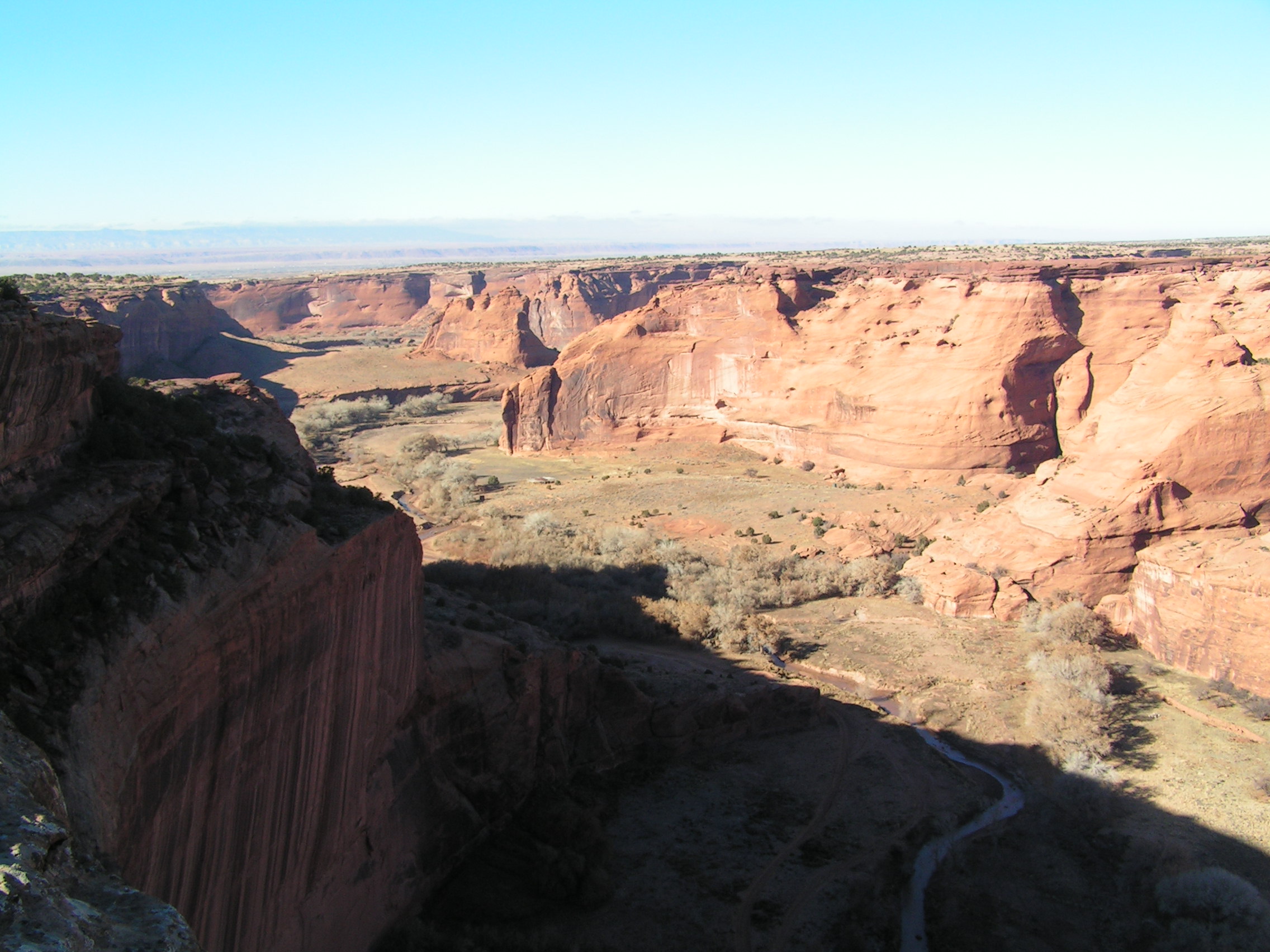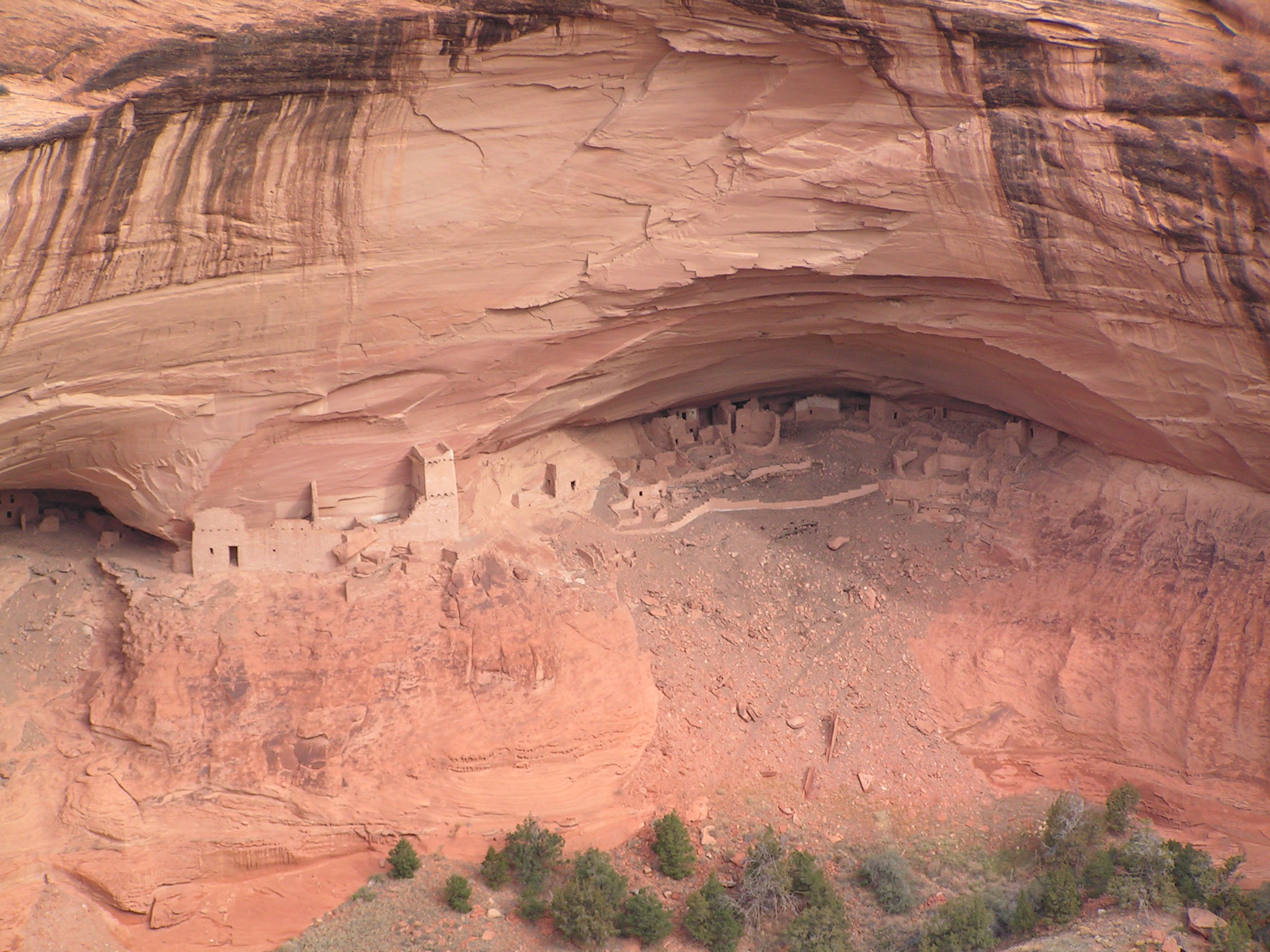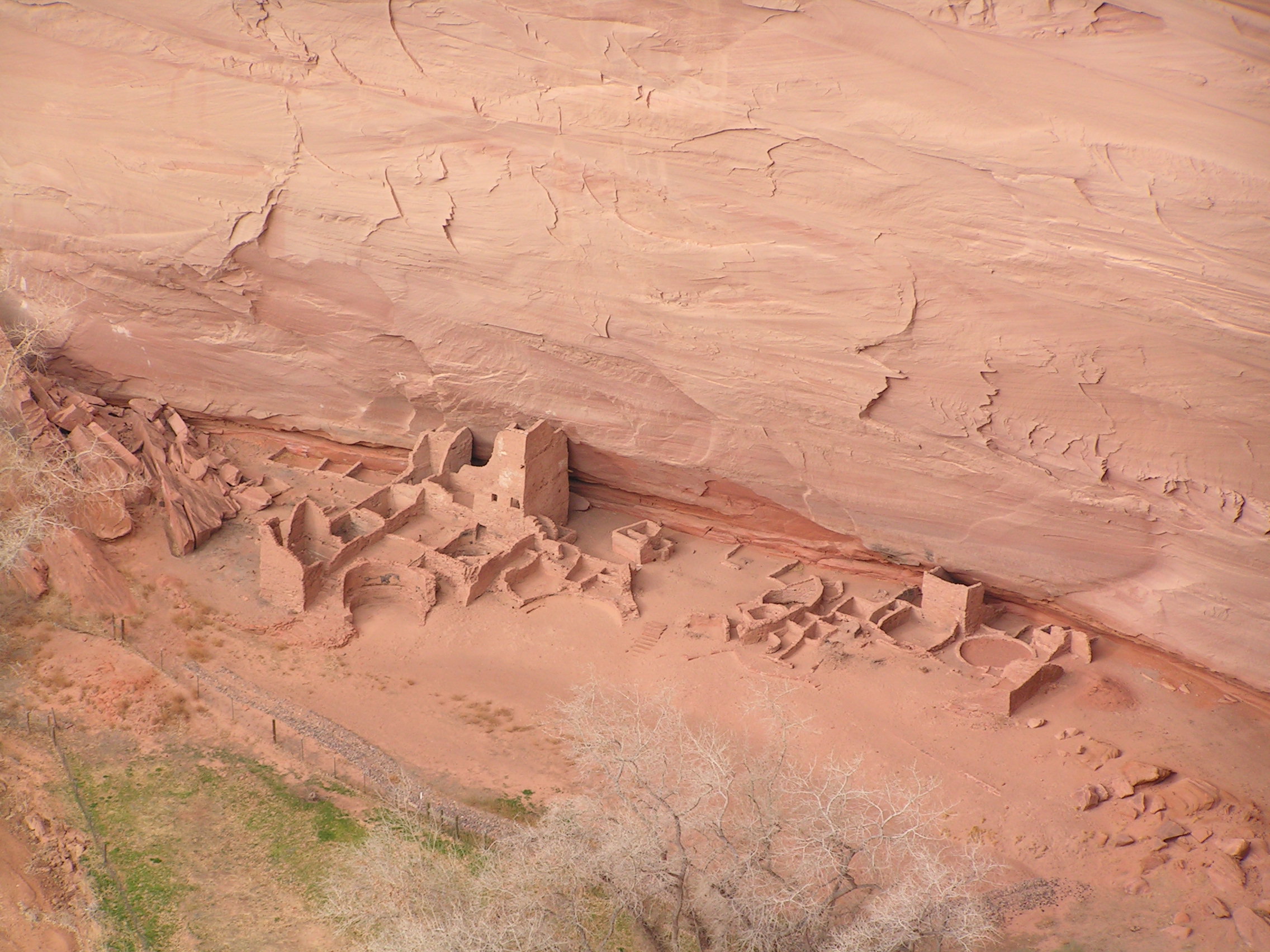So here are some more pictures of Canyon de Chelly, taken over Christmas holiday back in 2010. (Click to embiggen.)
Category Archives: Archaeology
Further wild speculation
After I wrote the blog post from two weeks ago, speculating that the “Ararat” of Genesis 8 might refer to Arrata in southwestern Iran, rather than Urartu in Anatolia, I stumbled over a very interesting article from 2014. The article is by Mohammed El Bastawesy, and it’s titled, “The Geomorphological and Hydrogeological Evidences for a Holocene Deluge in Arabia.”*
According to this article, during the late Pleistocene there was a massive lake occupying most of the southern part of the Arabian peninsula. At some point between 13,000 and 8,500 radiocarbon years ago the lake suddenly broke out of its basin – the article doesn’t explain why, but the entire region is geologically active. The water flowed north and east into what is now the Persian Gulf, which at the time, if you recall my earlier post about the Gulf Oasis, was dry and very likely habitable.
That makes three separate sources of flooding for the oasis: 1) Sea level rise, which is known to have happened but would not have happened suddenly without other conditions (such as breaking through a natural levee) that are not known to have been present. 2) River floods, which have not, to my knowledge, been conclusively shown to have occurred, but can nevertheless reasonably be assumed to have happened from time to time. 3) The emptying of this megalake, which is known to have happened and to have been sudden.
Before getting too excited, however, we need to remember that the very latest time period that all this could have happened is still a couple of millennia before anybody could possibly have written the story down. An oral narrative would only be passed down over that distance of time if each succeeding generation found it relevant to their own concerns. If not, after a few centuries the story would almost certainly be changed beyond recognition, if it survived at all. So, as I said earlier, this is wild speculation. But I think it’s interesting nonetheless.
*Published in Arabian Journal of Geosciences 8 (5): 2577-2586.
Filed under Archaeology, Folklore, Religion
Inequality in Ancient Israel
I read an interesting 2018 monograph* this morning by Avraham Faust about the archaeological evidence for social stratification in the Levant during the Iron Age. Faust looked at architecture, specifically houses, at dozens of archaeological sites. He divided the houses into four classes based on size, construction quality, and shared walls, and used the resulting categorization to create Lorenz curves for each site.
Interestingly, graphing the curves revealed significant social stratification for urban location – cities and large towns – but essentially none in rural villages. Faust attributes the difference to the presence of hired labor in urban areas. He also notes that this result implies that when the Biblical prophets denounced the exploitation of the poor, they were looking at what was happening in urban areas, not rural villages.
I would add in addition that this finding implies that in that society it was effectively impossible for individual households to accumulate large amounts of land. Archaeology obviously can’t reveal how closely Iron Age villages followed the laws about land and inheritance in the Torah, but we can use it to infer that whatever rules actually were followed led to farm land being distributed among a large number of households instead of just a few, and that the distribution at the level of the village was roughly equal. There were no large estates or landlords.
In contrast to my rant back in April about the misuse of Biblical archaeology, Faust’s monograph is an example of its proper application. He used archaeological methods to address an archaeological question about a culture in the past, not to try and prove or disprove anything in the Bible. The results do provide some insight into the way certain Biblical texts would have been understood by their original intended audience, however, and also give us a more precise picture of who the original intended audience of those particular passages was; that this message was aimed specifically at wealthy urban dwellers.
*Social Stratification in the Iron Age Levant. In Behind the Scenes of the Old Testament, edited by Jonathan S. Greer, John W. Hilber and John H. Walton, pp. 482-491. Baker Academic, Grand Rapids.
Filed under Archaeology, Religion
A Wild Speculation
It has occurred to me to wonder whether it’s possible that the Hebrew word ‘rrt given in Genesis as the resting place of the Ark should be read as “Arrata” instead of “Ararat.” Although the location of the legendary land of Aratta is uncertain, the road there from Sumeria, according to an account from the 21st century BC, went through Susa and Anshan. That would probably put it somewhere in the southern part of modern Iran. If that were the case, then the Mountains of ‘rrt, where the Ark was supposed to have landed, would be best understood as the mountains that separate Arrata from Sumeria. That is, the Zagros range.
I’ve been thinking about this in connection with a previous post here about the Persian Gulf Oasis. A major flood there, in the era when it was exposed above sea level, would easily cover a vast area. (The word ‘eres, translated as “earth” in Genesis 6 is also used i many other places in Genesis, and in the rest of the Bible. In most cases, it clearly does not refer to the entire planet. That’s something that should be kept in mind, since geology has definitively ruled out a planetary flood at any point during which humans, or anything that can be recognized as a human ancestor, existed.)
The hypothetical oasis and the region around it are now beneath the waters of the Persian Gulf. However, the rising sea could not have occurred fast enough to produced a catastrophic flood. But a river flood there could be just as devastating as a river flood in any other mostly flat region. And if the rising sea had, hypothetically, been held back by a natural levee of some sort, a sudden breakthrough would likely have utterly destroyed the entire area. Either way, debris and any boats could easily have wound up at the base of the Zagros Mountains. Thus my speculation about the name ‘rrt.
Now, granted, I am not a specialist in the Ancient Near East (my master’s thesis was The Archaeological Investigation of Gardening at the Historic Railroad Station of Kearsarge, California). I do know a little, however; enough to have adopted the position of a fairly strong maximalist, as that term is used in Biblical archaeology. In other words, I consider the Biblical text to be reliable history unless and until other evidence rules it out. The opposite, or minimalist, position holds that the Bible is not reliable except when corroborated by external evidence. (These positions should be understood as the ends of a continuum, not a dichotomy.)
And let’s be clear; all I’m offering at the moment is speculation. As far as I know, there is no evidence either for or against this scenario. However, it is likely that evidence to either support or refute this speculation can be found in the geology and archaeology of the Persian Gulf, if political conditions there are ever such that research can safely be done.
Filed under Archaeology, Religion
Rant – Archaeology and the Bible
Historically, archaeology has been used both to defend and to attack the accuracy of the Bible. As an archaeologist, even though my specialty is technology in the American West, I see this a lot. In my view, both are misuses. The proper archaeological study of past cultures requires understanding the evidence on its own terms. It is not valid to use it as a means of “proof texting” either for or against any particular preexisting opinion. Using it that way almost necessarily involves cherry picking of evidence, and making decisions about how to weight archaeological findings based primarily on whether or not the support the desired outcome, which is not the way good science is done. It also commits one to a particular understanding of the archaeological evidence which may be undermined by future findings.
As a method of coming to understand past cultures, archaeology helps us determine how the biblical texts would have been understood by their original audience. It can also constrain modern interpretations, by ruling in or out certain readings, and can help us understand practices that are foreign or obscure to modern readers. But it is not the handmaid of apologetics, whether theistic or atheistic.
In the words of Old Testament scholar John H. Walton:
Archaeology is a discipline independent of biblical studies. Although archaeology in the Middle East has often served those in biblical studies, and at times in its history has been motivated and undertaken by those whose interests were in biblical studies, it is not an arm of biblical studies. It is a scientific discipline that is driven by its own ends and means. This is why some today are uncomfortable with the label “biblical archaeology” – archaeology cannot be carried out with integrity if it is just targeting the Bible. As a science, it has a much larger task to fulfill as it focuses on recovering the material culture and successive lifestyles of the people of antiquity.
Filed under Archaeology, Religion
An Oasis in the Persian Gulf
I’d heard about this article while ago, and I finally got around to tracking down and reading New Light on Human Prehistory in the Arabo-Persian Gulf Oasis by Jeffrey I. Rose, which appeared in issue 51 no. 6 (December 2010) of Current Anthropology. The article is about the possibility that humans in the past lived in what is now the floor of the Persian Gulf, which was exposed by the lower sea levels during the Late Pleistocene.
It has been known for quite a while that the entire gulf is shallow enough to have been dry land during the most recent glacial episode, between roughly 74,000 and 8,000 years ago. The Tigris, Euphrates, and several other rivers flowed through it; the tracks of their former beds can still be traced on the sea floor, along with the site of a large lake. In addition, there are locations today where local aquifers release fresh water into the gulf; when the sea level was lower, these would have been springs. The combination of rivers and fresh water springs would have made the gulf habitable even during extremely dry glacial periods, when much of the surrounding regions were unable to support a human population. The author proposes that this area could have been a refuge for human populations when the climate was too arid to make surrounding regions livable.
Unfortunately, while the author spend a significant amount of space discussing the possible implications of this refuge on Paleolithic populations moving out of Africa, he gives far less attention to the much more interesting (to me) question of how it might have impacted the development of sociopolitical complexity and sedentism during the Neolithic. This was, after all, the Cradle of Civilization, and the final filling of the gulf took place not too long before the first settlement of Eridu. It was an era of rapid (compared to what went before) technological change, which readers of this blog should know is a major interest of mine. Is there evidence of Neolithic sedentism beneath the waters of the gulf? What about cereal cultivation? Animal husbandry? Early experimentation with metallurgy? We could easily imagine that people living in a highly productive environment that is somewhat limited in size and surrounded by much less productive regions might experience population pressure and adopt agriculture as a form of intensification. Is that what actually happened, or was the trajectory quite different? Given the current political/military reality in the Middle East, we might have to wait a while before any answers can be sought. Still, the idea is intriguing, and well worth pursuing as soon as it can safely be done.
Filed under Archaeology
Non-human Archaeology
Not, in this case, meaning the archaeology of extraterrestrial or other non-human societies, but archaeology by non-humans. Specifically, dolphins. According to the story here, a team of U.S. Navy dolphins being trained to locate mines found instead a Howell torpedo dating to 1889. The Howell was the first self-propelled torpedo used by the U.S. Navy – previously, the term “torpedo” had been applied to a wide variety of bombs and mines that were stationary, free-floating, or mounted on the end of long spars and used for ramming.
It’s an impressive find, but for now I’m still not too worried about being replaced by a dolphin. The sites I excavate are generally on land, plus the fact that I have hands does give me a bit of an advantage.
Filed under Archaeology, Technology
In my old neighborhood
Well, close to my old neighborhood, anyway. The local paper reported on a fascinating excavation going on adjacent to the San Gabriel Mission. This is the kind of thing project that can almost make me wish I hadn’t left California; an early historic and ethnohistoric site that even has a connection with railroad history.
I also noticed in the video that the dirt is being screened under some kind of portable shade. There have been more than a few times when I would have loved to have had that! In fact, if somebody will invent a motorized shade that can follow me when I’m surveying, you’ll be my hero forever.
Filed under Archaeology
Things that can not be explained
Surely everybody in the developed world has had some exposure to archaeology. From museums to elementary school science classes to Indiana Jones and Stargate, it seems impossible that anybody could grow up completely unaware of archaeology. So why does it seem that whenever I tell somebody that I’m an archaeologist there’s at least a 50/50 chance they’ll ask me about digging up dinosaurs?
Filed under Archaeology
Legalizing looting in Alabama
I just saw this rather frightening proposal in Alabama to change the state law to allow treasure hunters to take artifacts from archaeological sites located underwater in rivers, streams, and lakes. This isn’t just a problem of taking the artifacts themselves, although they are a very finite resource, but of the loss of knowledge about the past. In many (I would even say most) cases, the vast majority of scientific and historical information that can be obtained from a site is derived not from individual artifacts, but from their context. Once removed from that context, any information not recorded at the time of collection is gone forever.
If any of my readers live in Alabama, please contact your State Senator and tell them not to allow treasure hunters to loot the past.
Filed under Archaeology, Politics









